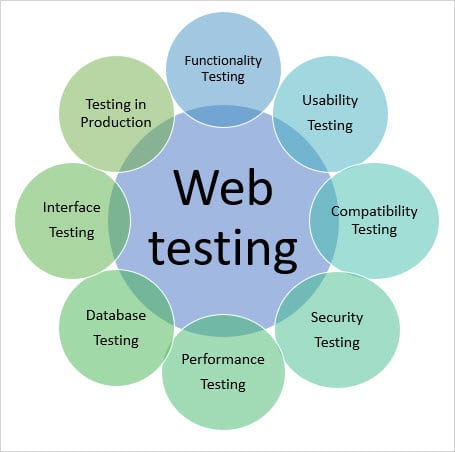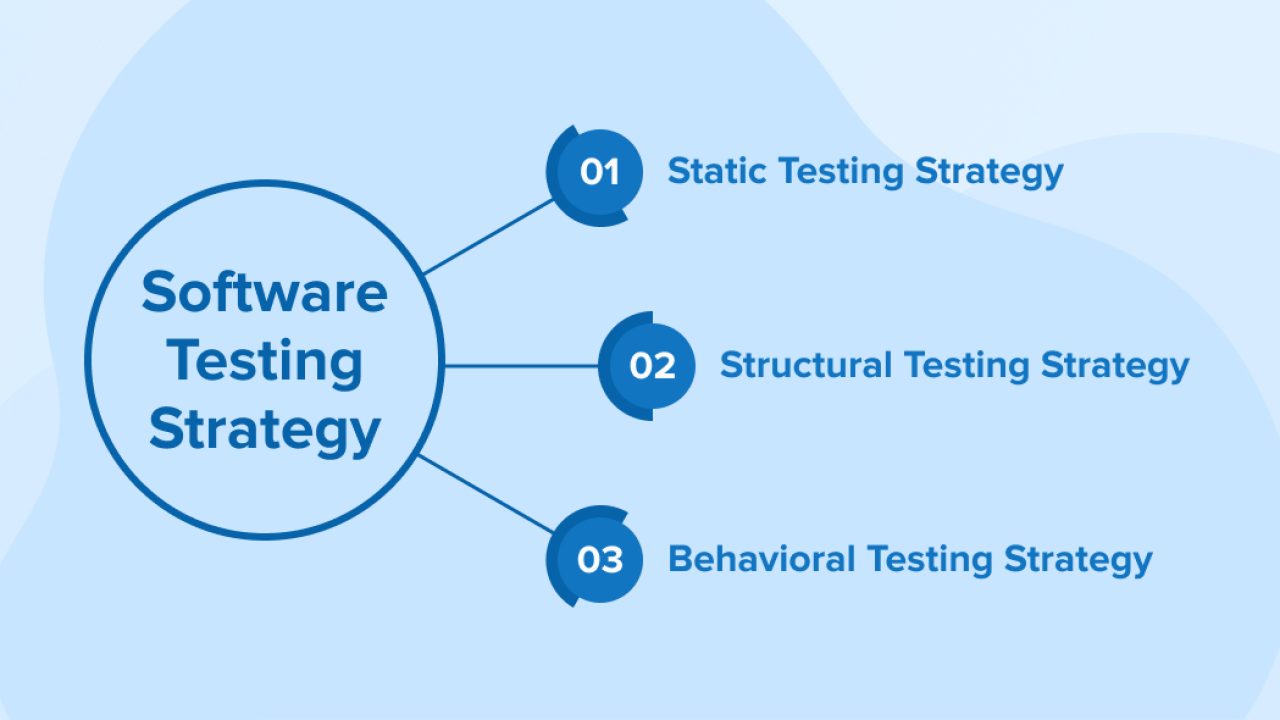Web Application Testing: How to Ensure Your Website's Functionality?

Share This Article
Web Application Architecture Ultimate Guide for 2023
Table of Contents
Subscribe to Our Blog
We're committed to your privacy. SayOne uses the information you provide to us to contact you about our relevant content, products, and services. check out our privacy policy.
What is Web Application Testing?
Web application testing is a specialized process focused on evaluating the functionality, usability, and overall performance of web applications. It's not just about finding bugs or errors but ensuring that applications work flawlessly across various browsers, devices, and networks.
Importance of Ensuring Website Functionality
A functional website is critical. It's like the frontline of user interaction, where users come to learn, explore, and connect. If a website doesn't work properly, users are likely to get frustrated and leave. Proper testing ensures that users have a smooth, trouble-free experience, which is essential for the reputation and success of the site.
Overview of Different Testing Methods
There are multiple approaches to testing web applications, each serving a unique purpose. This includes checking whether the application behaves as expected, ensuring that it interacts correctly with other systems, and confirming compatibility with various browsers and devices. Understanding these different methods is the first step towards achieving a more reliable web application.
By focusing on these areas, we can create websites that not only meet operational requirements but also offer a great user experience.
Check Out: The complete Guide on Testing Microservices
Types of Web Application Testing

Functional Testing:
Here's where we verify that each function of the web software application works as intended. It's the heart of testing, ensuring that search bars, user registration, and other functionalities work flawlessly. It's like checking if all the gears in a machine are well-oiled and running without a hitch.
Tools & Methods: Common tools for this testing include Selenium, QTP, and JUnit. Automated scripts or manual testing can be used to validate functionalities.
Checkout The Best 5 Automation Testing Tools
Usability Testing:
User experience is king. If visitors find it hard to navigate your website or understand its content, they're likely to leave. This testing ensures that the website is user-friendly, with clear navigation, legible fonts, and sensible layouts. A good website feels like a helpful guide, not a puzzling maze.
Tools & Methods: UsabilityHub and Lookback.io are tools that capture user interactions and feedback. Testing typically involves real users navigating the site while observers note challenges faced.
Interface Testing:
It's essential to check the interactions between different software systems. This involves ensuring that communication between the web and application servers is error-free. Think of it as ensuring the conversations behind the scenes are clear, preventing any on-stage hitches.
Tools & Methods: SoapUI and Postman are favorites for testing server interactions. These tools allow testers to send requests to the server and observe responses.
Compatibility Testing:
Our digital world is vast, with users accessing sites from a myriad of devices and browsers. This testing ensures your web app looks and performs consistently, whether accessed from a tablet, smartphone, or desktop, using Chrome, Firefox, or any other browser.
Tools & Methods: BrowserStack and CrossBrowserTesting offer platforms to test applications across different browsers and devices, ensuring universal compatibility.
Performance Testing:
Speed matters. If your site is slow, users might abandon it. This testing evaluates the site's speed, stability, and scalability under load. It's about ensuring the site doesn't just work but works efficiently, especially when many users access it simultaneously.
Tools & Methods: LoadRunner and Apache JMeter are popular choices. They simulate multiple users to check how the system behaves under peak loads.
Checkout How to Improve Performance of Microservices: Best Practices
Security Testing:
With cyber threats on the rise, a secure website isn't just preferable; it's essential. This testing checks for vulnerabilities or weaknesses that hackers might exploit, ensuring that user data is safe and the website is trustworthy.
Tools & Methods: OWASP, ZAP and Burp Suite are widely used for identifying security threats. Regular vulnerability scans and penetration tests are typical methods.
Learn More about Top Best Practices in Web Application Security
Regression Testing:
As web applications evolve, it's important to ensure that new changes haven't adversely affected existing functionalities. This testing ensures that previously developed and tested software still performs after a change.
Tools & Methods: Selenium and TestNG stand out for regression testing. Automation is key here, ensuring that new code changes don't break existing features.
Database Testing:
Data is the backbone of many web applications. This involves checking the integrity and consistency of data migration, retrieval, and storage in databases. Imagine it as ensuring your data vault is both robust and organized.
Tools & Methods: SQLMap and Tableau are tools that help in database testing. Methods involve checking data integrity, schema validation, and stored procedure testing.
Strategies for Effective Testing

When diving into web application testing, having a solid strategy is key. Here are some guidelines to streamline your testing process:
Prioritize Your Tests:
Focus on user flow and the most critical functions of your application. Identify and give priority to the features that users frequently interact with. This way, the most impactful parts of your application remain flawless.
Continuous Integration/Deployment (CI/CD):
Integrating your testing into a CI/CD pipeline ensures that your application is continuously tested and deployed smoothly. It encourages regular, consistent testing and quick bug fixes, promoting a more reliable application.
Read More about the Importance of CI/CD in Mobile App Development
Automated vs. Manual Testing:
A blend of both automated and manual testing brings out the best in your application. Automated testing is quick and efficient, while manual testing brings the human touch, uncovering issues that automated tests might miss.
Real-World Simulation:
Simulate real-world scenarios and user environments during testing. It unveils how users interact with your application, helping uncover issues that might not be apparent in a controlled testing environment.
Following these strategies will assist in refining your testing process, leading to a well-functioning, user-friendly web application.
Common Challenges in Web Application Testing
When it comes to ensuring a website's top-notch functionality, testers often face a variety of hurdles. Let's dive deeper into these challenges:
Changing Content & Design Flexibility:
Modern websites thrive on dynamic content. From ever-updating news feeds to user-generated posts, the constant flux can make consistent testing tricky.
Alongside, there's the task of guaranteeing that designs are responsive.
A layout that's appealing on a desktop might look squished or disjointed on a smartphone. Ensuring this adaptability without compromising on the design's integrity requires a keen eye and rigorous testing.
Different Browsers, Different Results:
With a buffet of browsers on the market, a uniform website experience is a challenge. Each browser has its quirks and rendering techniques. A feature that's seamless in Chrome might glitch in Firefox. Even versions of the same browser can show variations, making thorough cross-browser testing crucial.
Keeping Up With Growth:
A growing website is a good problem but brings testing challenges. As the user base expands, the infrastructure must bear the brunt of increased data, interactions, and concurrent traffic. This growth means testers must constantly ensure that scaling up doesn't compromise speed or functionality.
External Services Can Be Tricky:
Websites often rely on external plugins, APIs, or third-party services for added functionality. While these integrations provide value, they also introduce potential weak points. If an integrated service malfunctions, it can manifest as a glitch on the website. Identifying and isolating such issues becomes a task, given the interconnected nature of modern web applications.
Tips for Ensuring Comprehensive Testing For Your Project
Considering the option to outsource web application testing? Here's how it can bring immense value to your project:
- Stay Ahead with Trends: Collaborating with specialized partners ensures your project aligns with industry best practices. They're adept at integrating the latest methodologies, keeping your application modern and competitive.
- Knowledge is Power: External teams prioritize ongoing training. With their deep domain expertise, your application benefits from refined testing strategies, ensuring fewer hitches upon launch.
- Real-world Feedback: An external perspective often uncovers user experience issues overlooked in-house. This objective feedback can be the key to refining those subtle touchpoints, making your application more user-centric.
- Embrace Iterative Approaches: Working with a dedicated testing team means that there's a focus on refining and retesting. With each iteration, your application edges closer to perfection.
By collaborating with expert teams for your web application testing, you not only ensure a quality product but also position it to resonate better with end-users.
Conclusion
Web application testing isn't just a checkbox on your project list. It's a pivotal step in ensuring your website performs at its best. A smooth-functioning site means happy users and increased conversions. Remember, your website is often the first point of contact for your audience; it should leave a lasting impression.
Why Choose SayOneTech for Web Application Development?
When it's about creating impeccable web applications, you need a partner who understands the ins and outs. SayOneTech stands out as that trusted ally. Our team comes packed with experience and the know-how to craft top-notch business solutions. Being a full-stack web application development company, our focus is not just on responsive designs but also on achieving higher conversions.
Our strength lies in designing both front-end and back-end solutions, guaranteeing your web app provides the exact functionality you envisioned. What's more, we're always one step ahead, ensuring your app can handle the ever-evolving tech changes, giving you peace of mind. After all, isn't that what you want in a web app partner?
Let SayOneTech take the lead in your web application journey. With our keen focus on testing and quality, your website's functionality is in safe hands.
Share This Article
Subscribe to Our Blog
We're committed to your privacy. SayOne uses the information you provide to us to contact you about our relevant content, products, and services. check out our privacy policy.

